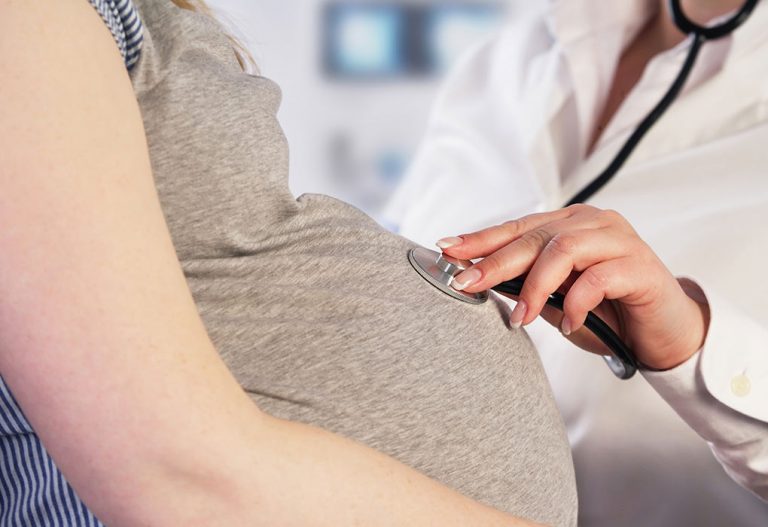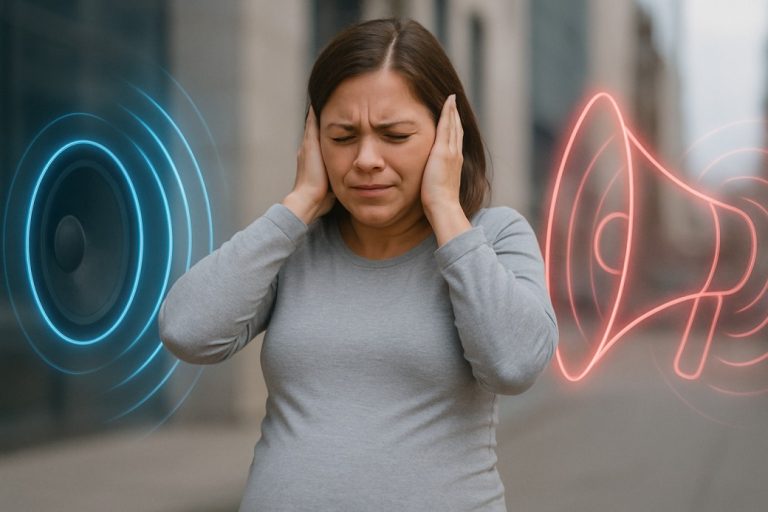First Trimester Ultrasound – Everything You Should Know

Your first scan in your pregnancy is a very special moment. Getting a scan of the belly can be quite exciting, especially for first-time mothers, and is a surreal experience, as it gives them the certainty that they indeed have a little being growing inside their belly. No wonder you see so many couples cherish the image of the first scan! Ultrasound during the first trimester brings a lot of excitement and reveals the growth of the fetus. If you are about to get your 1st trimester ultrasound and don’t know what to expect and how to prepare, this article will guide you to the best.
Ultrasound Scan During the First Trimester
The first trimester is a critical period, and adequate monitoring and support are needed to ensure that the pregnancy is sustained and usually progresses. This is also the period during which potential issues are identified and addressed, such as the risk of certain birth defects, like Down syndrome or chromosome defects. A 1st trimester scan combines a blood test for the mother and a fetal ultrasound during the weeks 11 to 14. First-trimester screening results can guide the healthcare provider in taking precautions to ensure the baby and mother stay healthy.
First-trimester sonograms are not a necessary requirement for all pregnancies to confirm the pregnancies, but they are common before 10 weeks, especially if high-risk features or clinical concerns, like advanced maternal age or irregular menstrual cycle, are present (1).
Types of Ultrasound Scans in the First Trimester
On average, for a normal pregnancy, four scans might be needed in the first trimester.
1. Dating and Viability Scan
The first one is a dating and viability scan, which can take place between the 6th and the 9th week. This is done to observe the condition of the gestational sac and cardiac activity.
2. Nuchal Translucency Scan
An early morphology scan or NT scan is done between the 11th and the 13th week of pregnancy. This is done to evaluate any congenital anomalies or birth defects that may be present. The test looks for increased fluid or skin thickening, which may indicate a defect (2).
3. Transvaginal Scan (TVS)
A transvaginal sonography is the common choice of ultrasound for both diagnosis and imaging follow-up, including a clear image of the baby in the very early stages of pregnancy, as the embryo is too small to be visible otherwise (3). Transvaginal scans are completely safe and can be performed at all stages of pregnancy.
4. Transabdominal Scan
A transabdominal scan is done after six weeks, around the 10th week. The ultrasound device probes the lower stomach to get a view of the baby. A gel is applied to the tummy for better movement of the device (4).
Why Would You Need the Early Pregnancy Scan?
An early pregnancy scan, which is also known as the dating or viability scan, is important for four main reasons:
- To confirm the pregnancy
- To check whether the pregnancy is viable
- To establish an estimated due date
- Diagnosing and preventing birth defects
Preventing Birth Defects
Screening during the first trimester works like a prenatal test to provide early information about the baby’s risk of having certain chromosomal conditions like Down Syndrome and Trisomy 18.
Down syndrome causes lifelong mental and social development impairment, while Trisomy 18 is a fatal condition in which the child may not live beyond the age of 1.
Since screening in the first trimester is done much before any other prenatal screening tests, it is an indicator that can give you a direction to decide on further diagnostic tests as the pregnancy progresses, especially in cases of high-risk pregnancies. The first-trimester scan for Down syndrome can also prepare the parents for the possibility of looking after a child with special needs.
However, the first-trimester scans do not evaluate results for other birth defects like spina bifida. This is done later in the pregnancy.
There are some cases when an early scan is particularly important. These include:
- Women suffering from irregular periods might find it hard to figure out a due date, which a scan can clarify
- Women with a history of miscarriage or miscarriages
- Cases of suspected ectopic pregnancy
- To verify the heartbeat of the foetus
Risks of First Trimester Scan
A first-trimester ultrasound (11–14 weeks) and associated screening tests are generally considered safe and noninvasive. According to the URMC Health Encyclopedia, the risks are minimal. The main caution is that if the scan or screening isn’t done at the correct time, or if the gestational age is miscalculated, the results may be misleading. This could cause unnecessary anxiety or confusion for expectant parents.
Because these are screening, and not diagnostic, tests, there is also a possibility of false positives (flagging a problem when the fetus is healthy) or false negatives (failing to detect a genuine issue). The scan itself, whether abdominal or transvaginal, carries no known harmful effects when performed by a qualified technician (5).
In short, the risks are low, but the limitations of timing and accuracy should be understood.
How Is the Ultrasound Scan Performed in the First Trimester Pregnancy?
The first-trimester screening or the first-trimester combined test involves the following two steps (6):
- A blood test
- An ultrasound exam, usually a transvaginal ultrasound
There are two ways in which a first-trimester ultrasound exam is done:
TVS (or) Transvaginal Scan
A transvaginal scan is usually done when the scan needs to be done before the pregnancy is 10 weeks along. The reason for this is that the baby is too small to be picked up by an external scan or ultrasound. The transvaginal ultrasound is easily able to detect a fetal heartbeat and determine how far along you are in pregnancy (7).
A transvaginal scan is done using a probe which is introduced into the vagina. The probe emits sound waves which bounce off the baby. These waves are then captured by the probe, which magnifies them and produces an image on the computer screen. While a TVS may feel awkward and uncomfortable, it is not painful unless one is tense. Taking deep breaths and relaxing as the probe is inserted is sure to help ease the discomfort.
When Is It Usually Performed?
Medical experts typically recommend that the first ultrasound scan during pregnancy be performed in the 6th week of pregnancy. This one will most probably be a TVS or transvaginal scan. After that, the next scan of the first trimester is usually recommended between the 11th and 13th weeks of pregnancy, which is typically an abdominal scan. Exceptions may be made in high-risk cases, and additional scans may be recommended. The first-trimester screening is optional, and the test results only indicate an increased risk of birth defects, not confirm it.
How to Prepare Yourself for First Trimester Scans?
Unlike an abdominal scan, a TVS does not need you to have a full bladder and is thus an easier procedure to prepare for. You will be required to undress from your waist down and lie down with your knees bent, much as you would for an internal exam. Consider wearing a two-piece outfit so that you only need to remove your lowers. You will also be asked to empty your bladder just before the scan.
What Is Analysed in the First Trimester Pregnancy Scans?
The first one, or the 6-week scan, is done for the following reasons:
- To check whether the embryonic sac is embedded inside the womb
- To check for an ectopic pregnancy
- To check how many fetuses the woman is carrying
- To check the heartbeat of the foetus
- To predict an accurate expected due date
The next scan, which is usually done between the 11th and the 13th week, is mostly an abdominal scan. As we mentioned before, the screening during the first trimester usually combines the results of two tests- blood and ultrasound tests. Here is what they indicate:
Nuchal Translucency Test
The first-trimester ultrasound scan is used to measure the thickness of the area behind the baby’s neck. If the thickness is above limits, it can be an early indicator of Down’s syndrome.
Blood Tests
Beta human chorionic gonadotropin (beta-hCG), which is a hormone made by the placenta, and pregnancy-associated plasma protein-A (PAPP-A), are proteins in the blood measured during the tests (2). High levels of beta-hCG might indicate birth defects, while low levels of PAPP-A might also indicate the same.
There are certain cases in which the doctor might ask for multiple scans in the first trimester. These include:
- Cases of spotting and bleeding during pregnancy
- Cases of multiple pregnancies with more than one foetus
- Cases in which the woman is over 35 years of age and pregnant for the first time
- Cases of pregnancy complications due to cysts, fibroids or any other medical disorders
What Can I See During the Early Pregnancy Scans?
1. First Pregnancy Scan at 5 Weeks
Not much can be seen during the scan at this stage. The doctor might be able to see a small gestation or pregnancy sac, which looks more like a black hole. That is because it is filled with fluid. At this stage, an ectopic pregnancy can be ruled out owing to the location where the sac has implanted in the uterus.
2. At 6 Weeks
If you are taking a first pregnancy scan at 6 weeks, you will notice that there might be a small white circle seen in the gestation sac, which is the yolk sac. This is attached to the embryo and provides it with nutrients. At this stage, the length of the embryo can be measured to calculate the due date.
3. At 7 Weeks
A small embryo can be seen, and the heartbeat can usually be heard.
4. At 8 Weeks
The embryo becomes clearer to notice on the scan, and measures about 1 to 2 cm.
5. At 10 Weeks
The baby grows fast and can measure about 3 cm during this time. The heartbeat can be both seen and heard.
6. At 11 or 12 Weeks
This is when you’ll be due for your NT scan. The baby will measure about 5 to 6 cms from crown to rump. This scan is used to check:
- The thickness of the Nuchal Translucency
- The position of the placenta
- The urinary bladder and stomach of the foetus
- Foetal spine and limb issues
- Abdominal wall defects
- The blood circulation to the uterus
Can I Figure Out Whether I Have Twins?
Twins or multiple pregnancies can be seen from about six weeks onwards, but the doctor may miss them at such an early stage. This happens because sometimes, while the heartbeat is visible in one sac, it might not be visible in the other. In several cases, twins are conceived, but only one embryo grows and develops. This is called the vanishing twin phenomenon and is quite common. In the case of twins, the scans can also determine whether the twins share a placenta or a sac, or have individual ones.
What If the Results Show a Problem?
It is okay to be a bit nervous, especially if it’s your first pregnancy, and of course, if the initial tests do indicate something wrong, then it is natural to be worried. However, the advantage of an early scan is that if anything unusual is noticed, your doctor is sure to address the issue before it becomes a cause for concern.
In certain cases, the indicators can be a sign of a serious condition like Down’s syndrome. The doctor may offer some specific further tests, which can give a clearer picture of whether or not your baby has a chromosomal abnormality. But since these tests do carry a small risk of miscarriage, an ultrasound is always done beforehand. If an ectopic pregnancy is detected in the scans, surgery might have to be performed to terminate the pregnancy before it becomes dangerous for the mother.
If the problem is more serious, like the pregnancy not being viable, then it can be a hard call, depending on how risky is the condition, and the pregnancy needs to be terminated in the initial stage itself.
FAQs
1. Are first-trimester scans safe for the fetus and mother?
Yes. The 1st trimester sonogram is non-invasive and low risk, with no known harm when performed correctly by skilled operators.
2. When should first-trimester scans be done?
Typically, between weeks 11 and 14 of gestation, when measurements such as nuchal translucency are most reliable.
3. Is first-trimester screening accurate?
The scan in the first trimester of pregnancy is not always 100% accurate. This test serves merely as a screening tool to assess whether there is a heightened risk of the fetus developing a birth defect. There is a possibility of false-positive outcomes, which suggest a problem when the fetus is actually healthy, as well as false-negative outcomes, which imply a normal result despite the presence of a health issue in the fetus.
4. What happens after the first trimester screening?
Once the tests are complete, you will have a meeting with your healthcare provider to go over the results. It’s important to note that first-trimester screening is not entirely accurate and does not provide a definitive diagnosis. In the case of abnormal results, your healthcare provider will talk about additional testing needed for a diagnosis. If suitable, you will be presented with options for genetic testing and counselling (2).
While the very first scan during pregnancy is not compulsory, it is highly recommended, especially if you’ve conceived with difficulty. The scan between the 11th to 13th week is especially important and is one you should not miss on any account, as it can be an important indicator of the baby’s health and the viability of the pregnancy.
Also Read:
CT Scan while Pregnant
Anomaly Scan while Pregnant
Ultrasound Scans during Pregnancy
Was This Article Helpful?
Parenting is a huge responsibility, for you as a caregiver, but also for us as a parenting content platform. We understand that and take our responsibility of creating credible content seriously. FirstCry Parenting articles are written and published only after extensive research using factually sound references to deliver quality content that is accurate, validated by experts, and completely reliable. To understand how we go about creating content that is credible, read our editorial policy here.
























